
If you’re excited to celebrate Mayflower Day, why not create a veggie garden that pays tribute to colonial traditions? By planting heirloom seeds, you are using the same types of plants that early settlers grew. You can also use companion planting, which helps different plants grow better together, just like the early settlers did. One great method to try is the Three Sisters planting, where corn, beans, and squash grow together. Not only does this method produce more food, but it also represents a true story of how people worked with nature. Do you want to learn how to make this kind of garden?
Starting a veggie garden for Mayflower Day is a wonderful way to celebrate history. You can use special seeds and grow plants just like the early settlers did! Discover the fun of companion planting and try the Three Sisters method. This allows you to create a garden that’s not only beautiful but also teaches important lessons about farming. Let’s dive into these exciting garden ideas together!
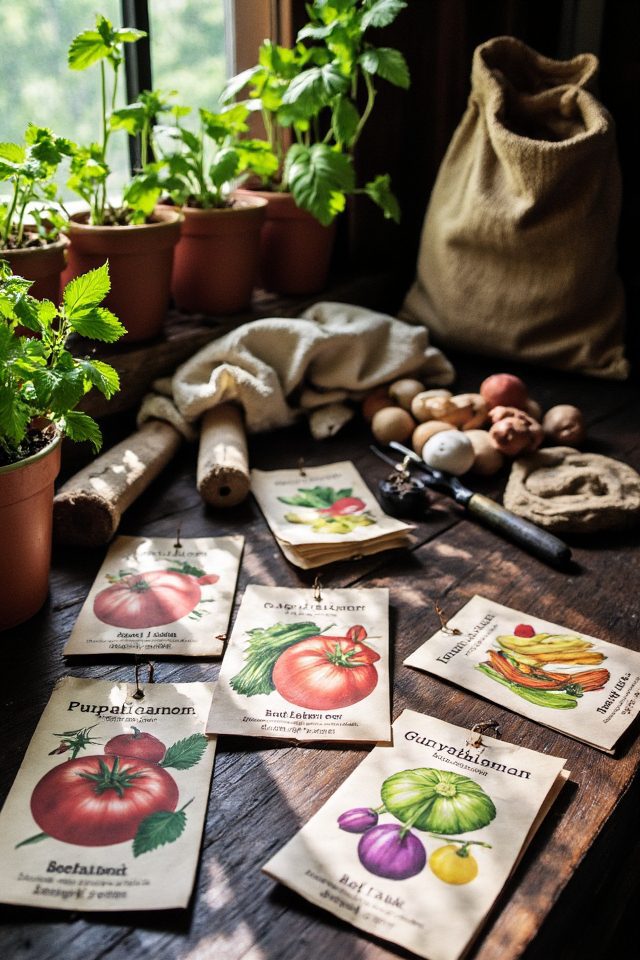
Heirloom seed selection is essential for recreating a colonial-inspired veggie garden, as these seeds are often passed down through generations, offering flavors and varieties that modern hybrids may lack.
Choose heirloom vegetables such as tomatoes, beans, and squash that were historically cultivated during colonial times.
These seeds not only provide a taste of history but also promote biodiversity and sustainability in our gardens.
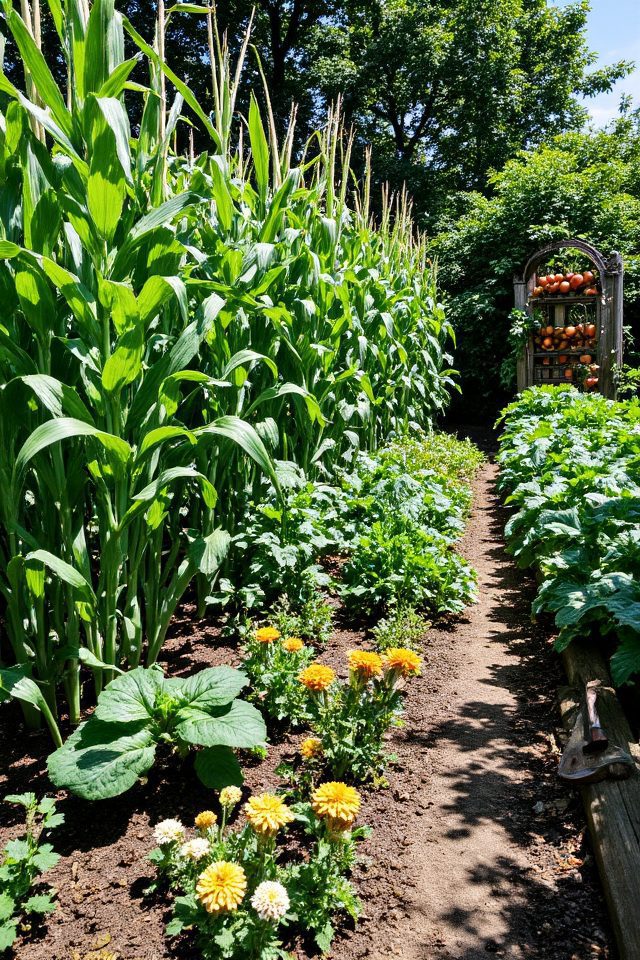
Companion planting techniques, rooted in colonial gardening practices, emphasize the benefits of pairing certain plants together to enhance growth, deter pests, and improve soil health.
For instance, planting corn alongside beans allows vines to climb the stalks while providing nitrogen to the soil. Meanwhile, marigolds can be integrated to repel harmful insects.
This harmonious approach not only maximizes space but also fosters a resilient and thriving garden ecosystem reminiscent of traditional colonial horticulture.

Raised beds are a practical and aesthetically pleasing way to cultivate a veggie garden, drawing inspiration from colonial gardening techniques.
These elevated plots provide excellent drainage and soil quality, making maintenance easier. By keeping the soil at a manageable height, gardeners can reduce back strain while weeding and harvesting.
Additionally, raised beds allow for better control over soil composition and can warm up quicker in spring, extending the growing season for your vegetables.
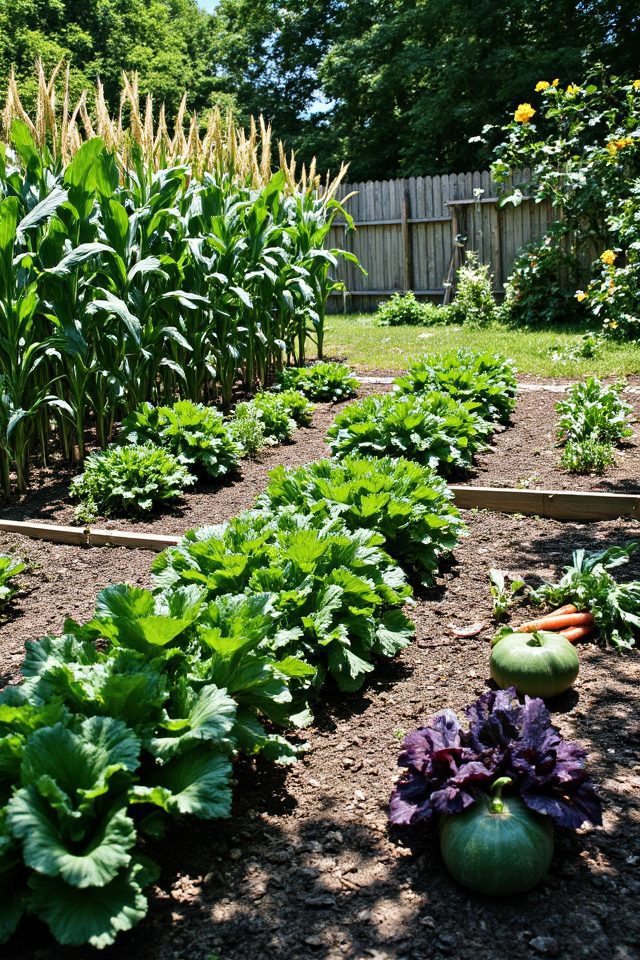
Crop rotation is a crucial practice rooted in colonial farming traditions that enhances soil health and fertility. By alternating different types of crops in a given area over time, this method helps prevent nutrient depletion, reduces pest and disease buildup, and improves soil structure.
For instance, legumes can enrich the soil with nitrogen after heavier feeders like corn. Implementing crop rotation in your veggie garden not only honors historical techniques but fosters a sustainable and productive growing environment.
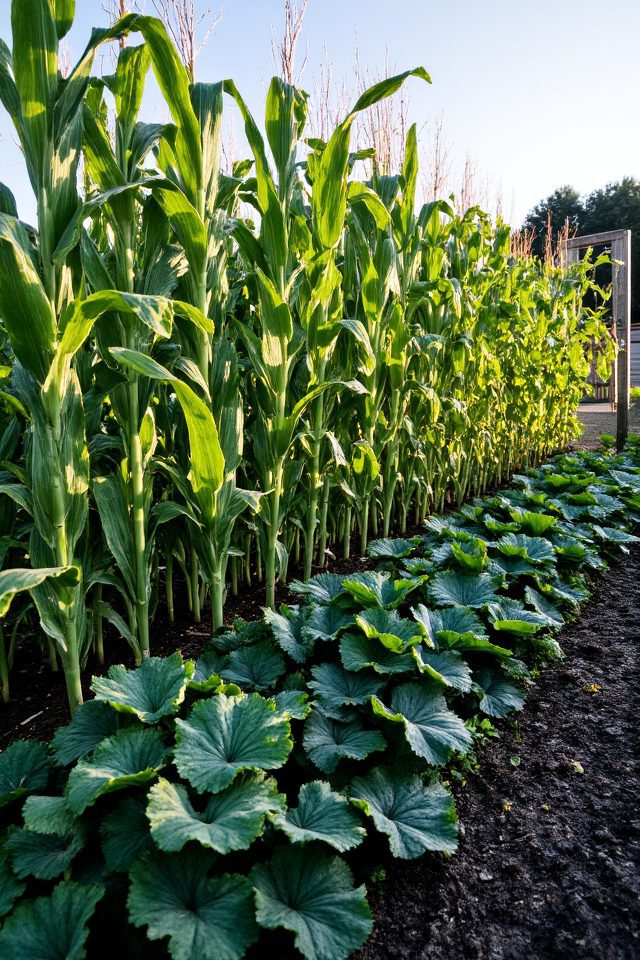
The Native American Three Sisters planting method celebrates the harmonious relationship between corn, beans, and squash.
This ancient agricultural technique involves planting these three crops together, allowing them to thrive in a symbiotic environment.
Corn provides a sturdy structure for the beans to climb, while beans fix nitrogen in the soil, enhancing fertility.
Meanwhile, squash’s broad leaves shade the ground, suppressing weeds and retaining moisture.
This sustainable approach not only maximizes space but also honors traditional Native American practices.
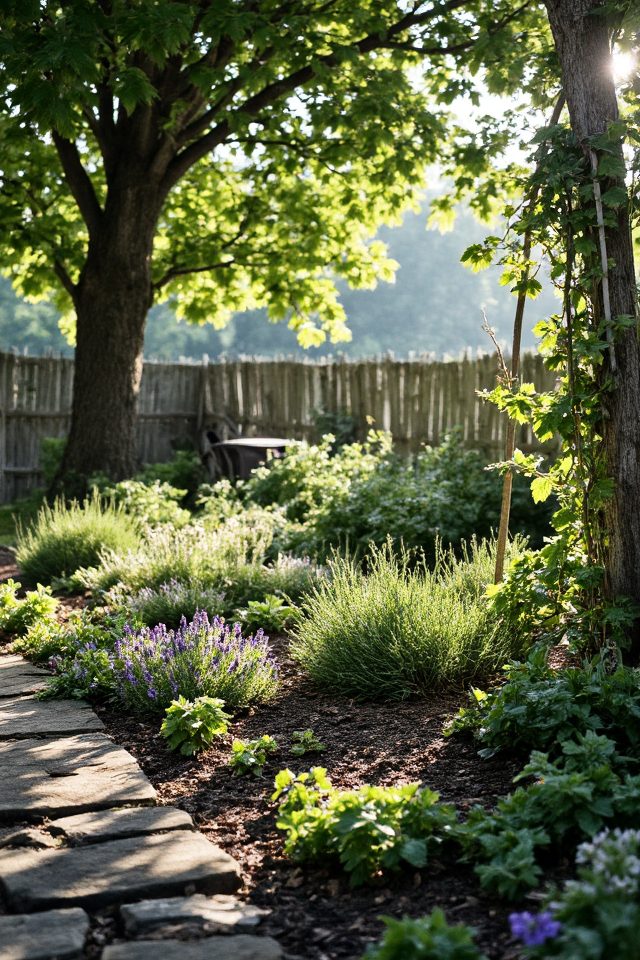
Herbs played an essential role in colonial gardens, valued for their culinary, medicinal, and aromatic properties. Common herbs like thyme, rosemary, and sage not only enhanced the flavors of dishes but also served as natural remedies for various ailments.
Colonists often planted them close to their kitchens for easy access. Additionally, herbs such as lavender and chamomile were cultivated for their soothing qualities, reflecting the blend of practicality and beauty in colonial gardening practices.
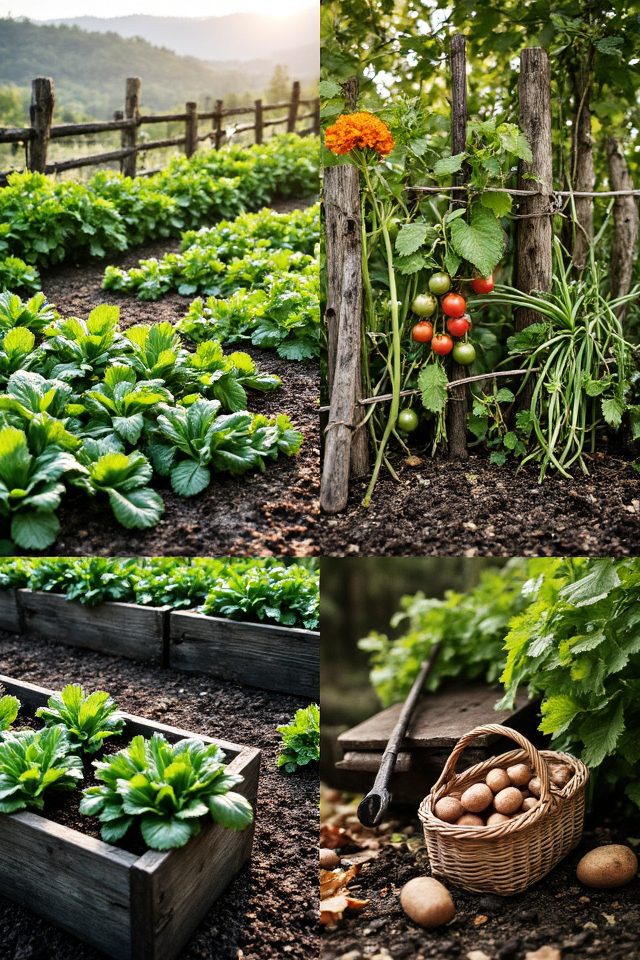
A seasonal planting calendar inspired by colonial times is essential for cultivating a thriving veggie garden.
In spring, begin sowing cold-hardy crops like peas and cool-season greens such as lettuce and spinach. As the weather warms, shift to planting beans, tomatoes, and peppers in early summer.
In the fall, focus on harvesting and storing root vegetables like carrots and potatoes, ensuring a bounty even in the colder months.
This calendar helps recreate the rhythms of sustainable, historical gardening.
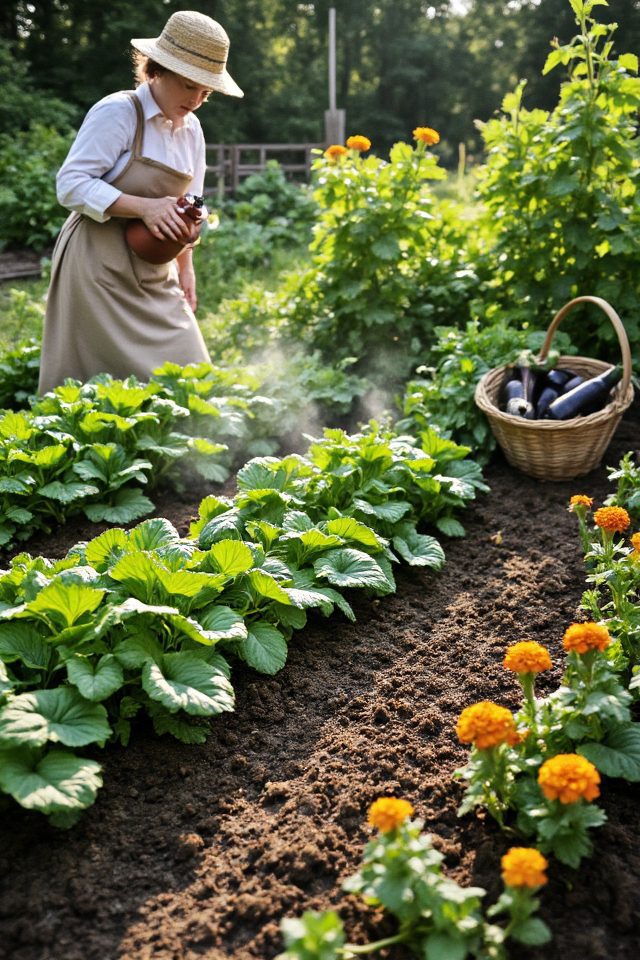
In colonial times, gardeners relied on natural pest control methods to protect their crops without harmful chemicals. Techniques included companion planting, where certain plants repel pests or attract beneficial insects.
Herbs like basil and marigolds served dual purposes as pest repellents and culinary additions. Additionally, homemade remedies using soap, garlic, or vinegar were applied to deter unwanted insects.
Embracing these sustainable practices not only protects the garden but also fosters a healthier ecosystem.

Traditional tools and equipment used in colonial veggie gardens were simple yet effective, emphasizing practicality and sustainability. Items like wooden hand plows, hoes, and spades were crafted from durable materials, allowing for efficient cultivation of the land.
Gardeners often utilized seed packets made from cloth or paper, while natural materials like baskets and buckets were employed for harvesting.
Embracing these vintage tools not only enriches the gardening experience but also connects modern gardeners to historical practices.

Using mulch in your veggie garden is an effective way to retain soil moisture, a practice rooted in colonial times.
Organic materials such as straw, leaves, and wood chips can be spread across the soil to create a protective barrier. This helps reduce evaporation, keeps the soil temperature stable, and suppresses weeds, promoting healthier plant growth.
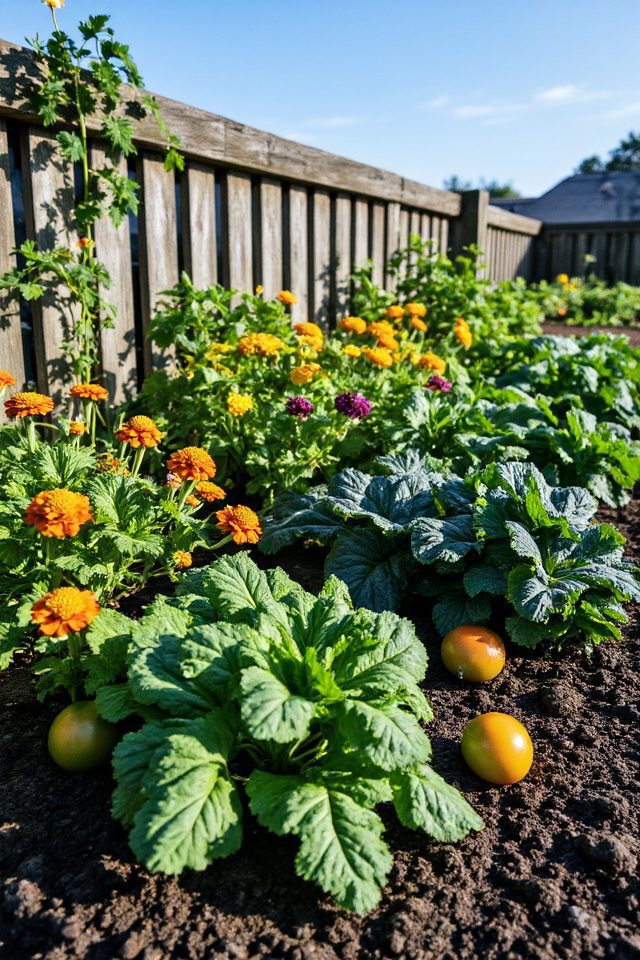
Incorporating flowers into your colonial-inspired veggie garden not only enhances its aesthetic appeal but also promotes biodiversity. Native flowers attract beneficial insects such as pollinators and predatory pests, fostering a healthier garden ecosystem.
Consider planting a mix of perennials and annuals alongside your vegetables, choosing varieties that were popular in colonial times, like marigolds and nasturtiums. These beautiful blooms will help improve soil health, increase crop yields, and create a vibrant, thriving garden reminiscent of early American homesteads.
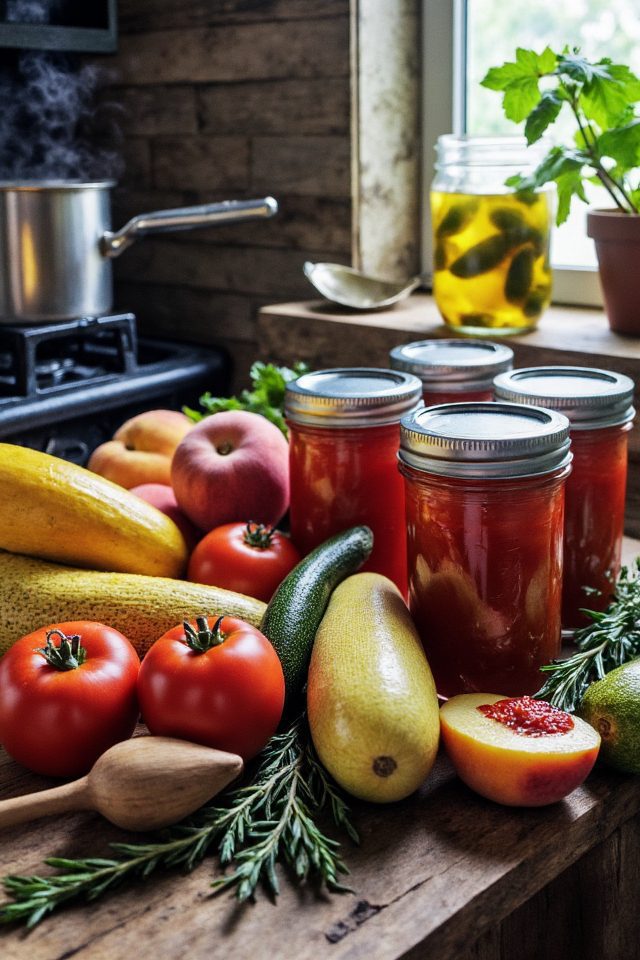
Preserving harvest through canning is a time-honored practice that dates back to colonial times, enabling families to enjoy the fruits of their labor long after the growing season ends.
Canning involves sealing fruits, vegetables, and other produce in airtight containers, which are then heat-processed to eliminate spoilage. This not only extends the shelf life of garden abundance but also captures the vibrant flavors and nutrients of fresh harvests, creating delicious, ready-to-eat options for winter months.
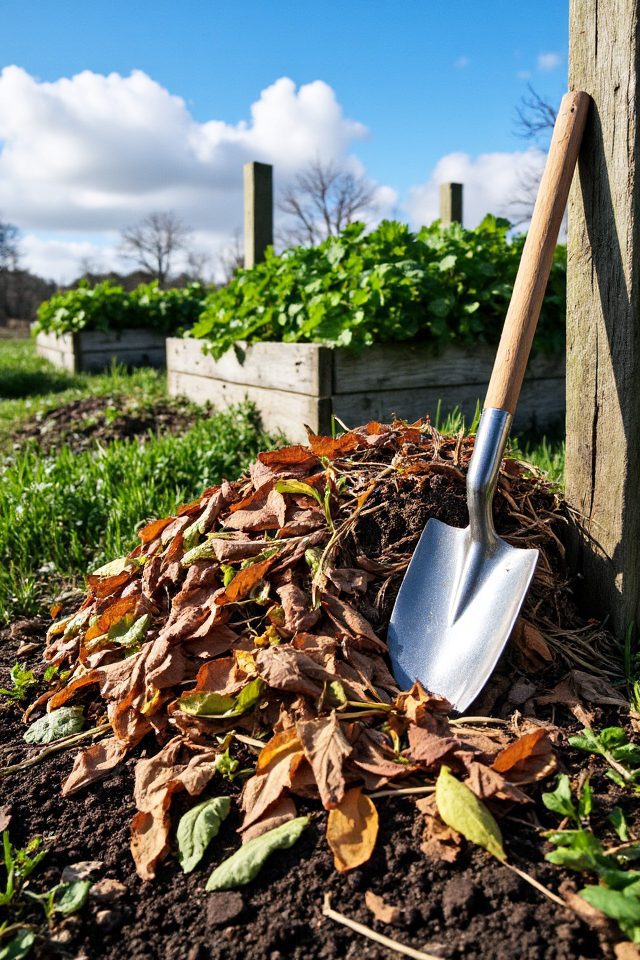
Composting is an essential practice for creating nutrient-rich soil in your veggie garden, especially when inspired by colonial gardening techniques.
In colonial times, gardeners would repurpose organic waste, such as kitchen scraps and yard debris, to enrich the earth.
By layering brown materials (like dried leaves and straw) with green materials (such as vegetable peels and grass clippings), you can promote decomposition.
This natural process not only enhances soil fertility but also helps retain moisture and encourages a thriving vegetable garden.
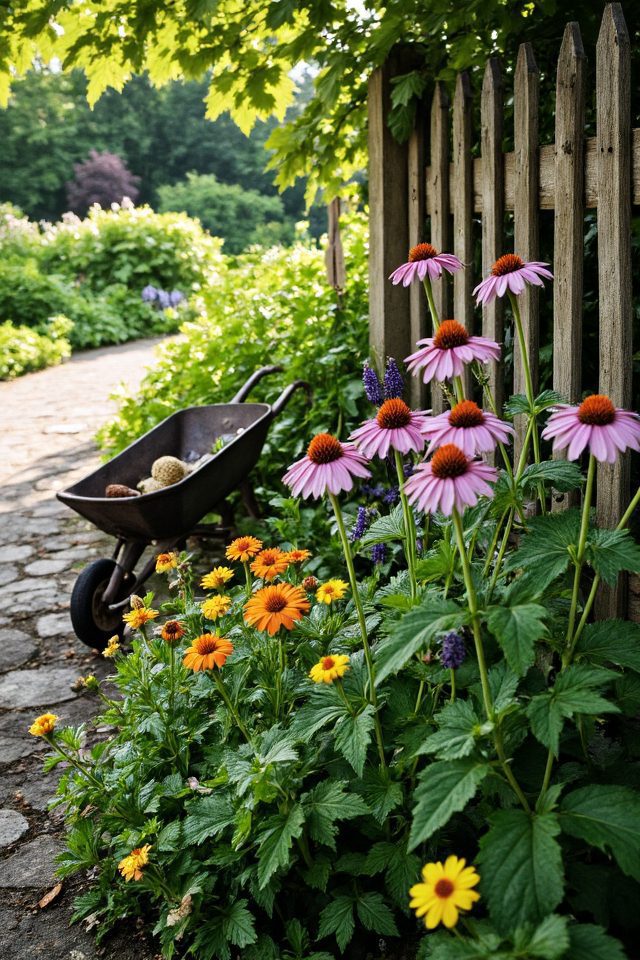
Medicinal plants played a significant role in colonial gardens, serving both health and culinary needs. Varieties like echinacea, calendula, and comfrey were commonly cultivated for their healing properties, addressing ailments from colds to skin irritations.
These plants not only contributed to self-sufficiency but also connected settlers with traditional herbal practices. Incorporating these medicinal varieties into modern gardens can provide natural remedies and enhance the historical authenticity of a colonial-inspired veggie garden.
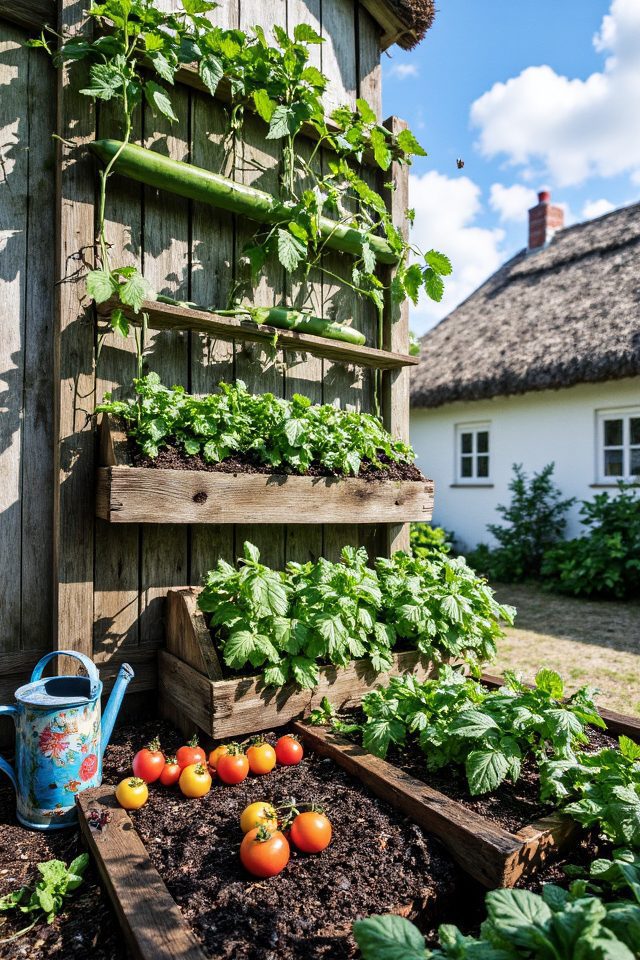
Vertical gardening is a practical and stylish solution to maximize space in your veggie garden, especially in smaller settings.
Inspired by colonial techniques, this method involves using trellises, wall planters, and tiered containers to cultivate crops like beans, cucumbers, and tomatoes.
By growing upwards, you not only save ground space but also increase air circulation and sun exposure, which can lead to healthier plants and more abundant harvests.
Embrace this efficient gardening style to recreate the resourcefulness of colonial gardens!
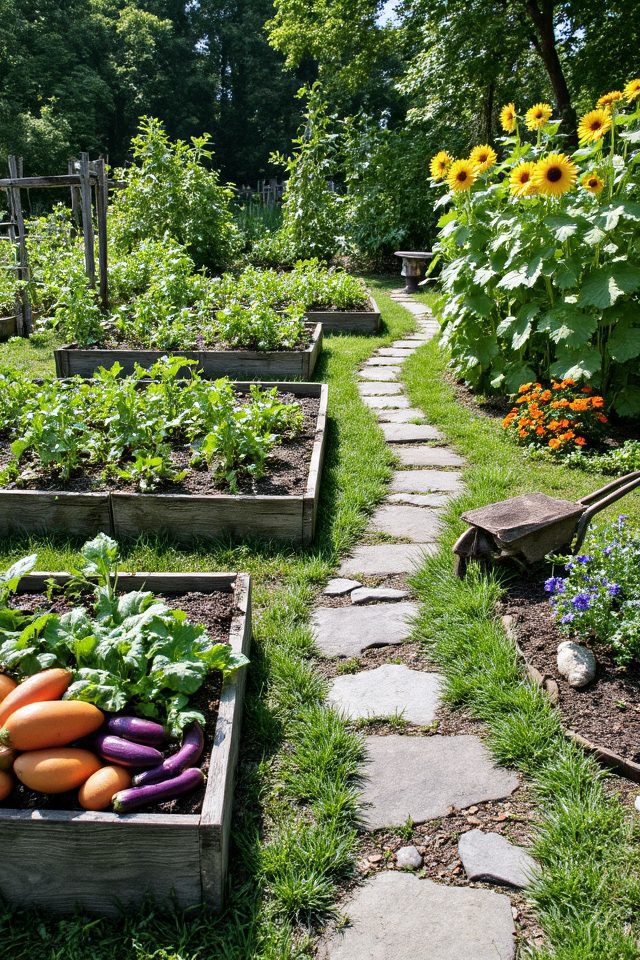
Creating an aesthetic garden layout inspired by Colonial times involves blending practicality with beauty.
Start by arranging your garden in neat, geometric plots, perhaps using a combination of low fences or trellises to define spaces. Incorporate a mix of traditional vegetables like beans, squash, and herbs alongside ornamental flowers.
Pathways lined with stones or gravel can enhance the visual appeal, while raised beds made from natural materials add texture.
Emphasizing symmetry and balance will evoke the charm of colonial gardens.
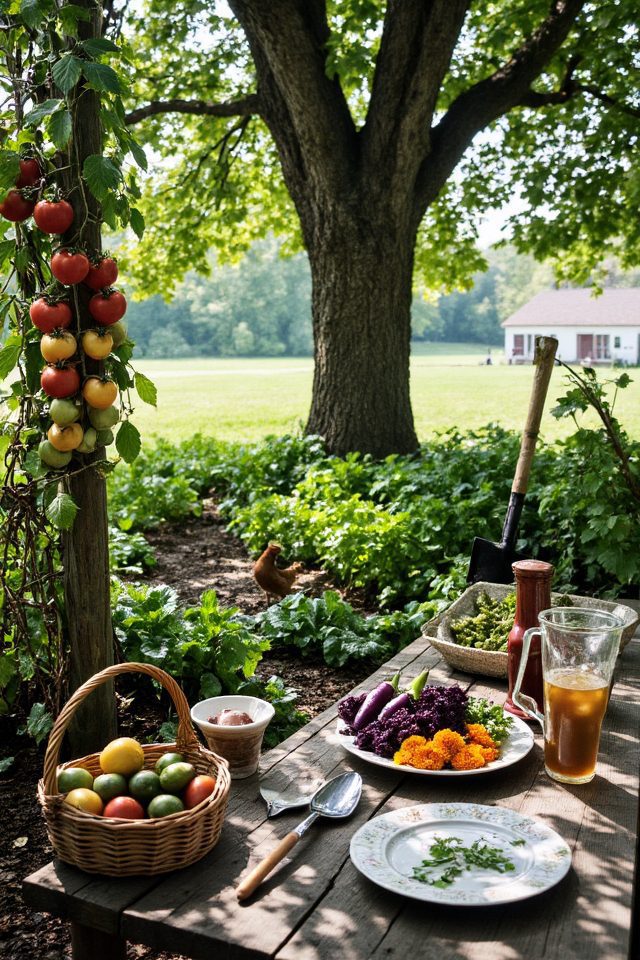
The farm-to-table experience connects us directly to our food sources, emphasizing freshness and sustainability.
Inspired by colonial times, this approach encourages home gardeners to cultivate a diverse array of vegetables that once graced early American tables. By growing heirloom varieties and utilizing traditional planting methods, you can recreate the flavors of the past while enjoying organic, seasonal produce.
This connection enhances your meals and fosters a deeper appreciation for the land and its bounty.
By embracing these veggie garden ideas inspired by colonial times, you’ll not only honor the legacy of early settlers but also cultivate a thriving, sustainable space. Incorporating heirloom varieties, companion planting, and smart gardening techniques like raised beds and vertical gardening will make your garden both beautiful and productive. As you watch your crops flourish, you’ll enjoy the rewarding experience of farm-to-table living, reconnecting with nature while savoring the flavors of history. So, get planting!

Don't let aphids, slugs, and caterpillars ruin another plant. Take back control with simple, natural methods that actually work.